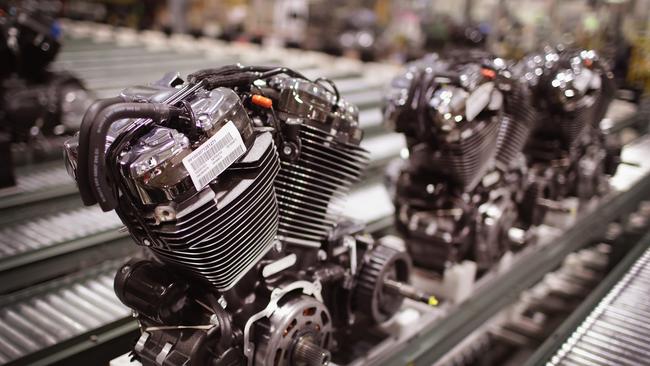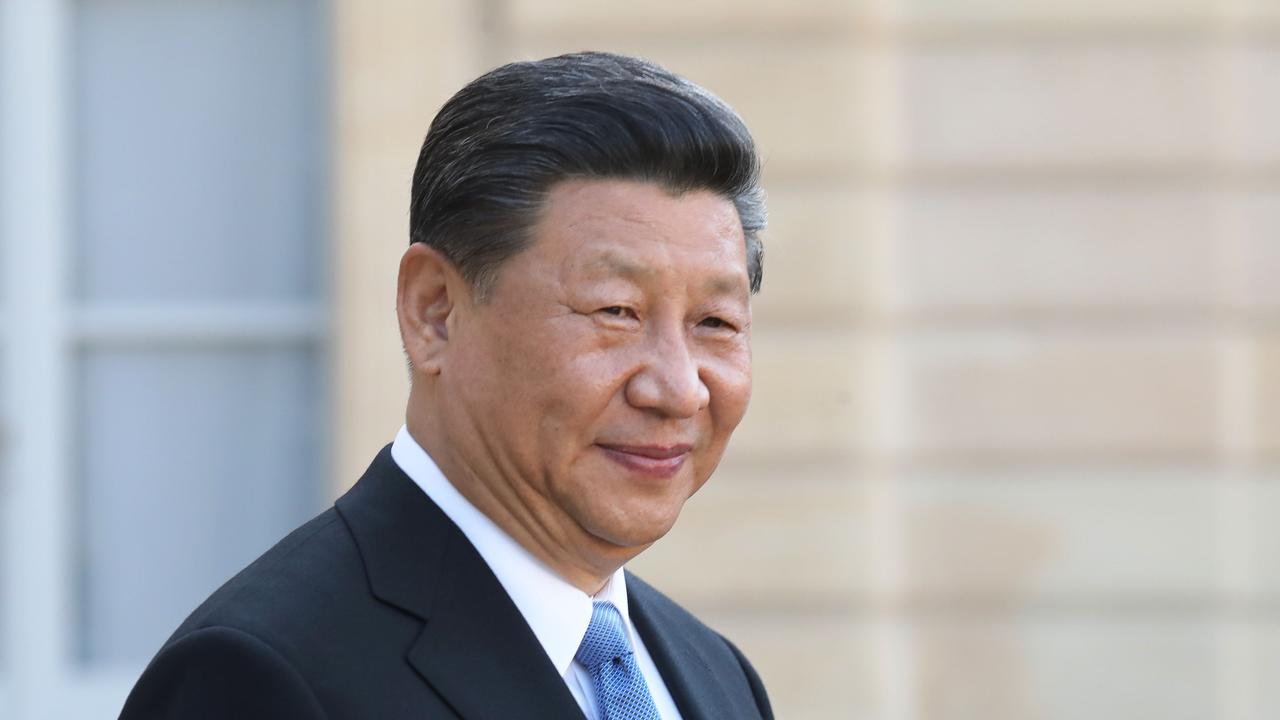Tit-for-tat tariff pincer movement hobbles Hogs
On the new battleground of the global trade wars, Harley-Davidson is threatened on two fronts.

On the new battleground of the global trade wars, Harley-Davidson is threatened on two fronts.
New US tariffs on steel and aluminium could increase the company’s bill for raw materials by up to $US20 million ($27m) this year. And as other countries launch retaliatory tariffs, the cost of shipping bikes to Harley’s key overseas markets is expected to increase dramatically.
The company said in a security filing yesterday that tariffs of 31 per cent that the EU enacted last week on its motorcycles would raise the cost of each bike it ships there from the US by about $US2200. Harley said its immediate response would be to start moving production of cycles sold in Europe.
The strategy is expensive — costing up to $US100m annually — but apparently necessary. America’s collection of motorbike buyers is thinning out, making buyers abroad more important than ever to the 115-year-old manufacturer.
In the US, well-heeled baby boomers, keen to embrace Harley-Davidson as a status symbol and a ticket to freedom, are ageing. The younger set has shown stubbornly low interest in the two-wheeled machines sometimes known as geezer gliders.
At this rate, the number of foreign buyers of Harleys eventually will eclipse those in the US. Last year, more than 39 per cent of Harley’s sales were outside the US. It’s a big reversal for a company that as recently as 2004 sent four out of five motorbikes it sold to US garages.
International markets offer big opportunity, says Harley’s chief operating officer, Michelle Kumbier. But they also offer lower profits, in part because buyers overseas tend to opt for smaller bikes and fewer options.
This is not a welcome development when operating margins are projected potentially to slip below 10 per cent.
Harley has taken the step before of building factories overseas to steer around tariffs in high-growth markets. Tariffs are already as high as 100 per cent in countries such as India and Thailand. So Harley bikes, an iconic US product, are now churned out of plants in India and Brazil. A new facility in Thailand is about to spring to life.
In the US, Harley is building for the overseas market as well. A recent tour of the company’s Menomonee Falls, Wisconsin, plant showcased a buzzing factory where Milwaukee-Eight Big Twin engines were assembled to be shipped to bike factories in the US, or crated for shipment to foreign factories. This operation’s future is dependent on the company’s ability to woo buyers on the other side of the world.
Other factories are falling victim to the declining demand for motorcycles in the US.
Dave Rogers, a 50-year-old with two children in college, will be losing his job at Harley-Davidson’s Kansas City factory, which will close its doors soon.
He joined the company in April last year “thinking this is the last job I’m going to have to get”. He expects to find work once Harley cuts him loose, but it is hard to replace the high-paying manufacturing jobs that old unionised producers offer.
Kumbier says trade wars are squeezing Harley, particularly because the price of steel and aluminium (of which motorcycles primarily are composed) has spiked due to speculation on the impact of potential tariffs.
The anticipated increase in raw material prices could add up to $US86 to the cost of every Hog shipped this year, although executives are looking for ways to mitigate the impact.
Meanwhile, to boost ridership in the US, executives are putting a big focus on training more cyclists, hoping to raise a new crop of riders with motorcycle education programs offered at Harley dealerships. And Harley plans to launch a battery-powered bike that is easier to ride.
That’s right, an electric Hog. No one said recovery wouldn’t be humbling.
Harley-Davidson has needed to adapt to tough market conditions before. A decade ago, to boost efficiency and margins, it slimmed down departments, eliminated redundant facilities, added more automation to its plants and set up new systems to add flexible workers. In the 1980s, faced with competition from Japan, the company adopted lean-production techniques and management styles popularised by Toyota.
But the company also has needed a helping hand. In 1983, US president Ronald Reagan slapped a tenfold increase in tariffs on imported motorcycles to combat Honda, Kawasaki and other foreign rivals, and compel those companies to build more bikes stateside. The duties lasted about five years, propping up America’s motorcycle sector.
President Donald Trump referenced those protections during his meeting with company executives early last year, saying Reagan “put on large tariffs, and you wouldn’t be talking about Harley-Davidson probably right now if he didn’t do that”. Still, the steel and aluminium tariffs that Trump enacted to aid US manufacturers further could end up crippling one of the main players he intended to help.
Those that live by trade barriers eventually could die by them. Kumbier says its important to remember the current tit for tat is still playing out.
“We’re hoping more reasonable minds prevail.”
The Wall Street Journal


